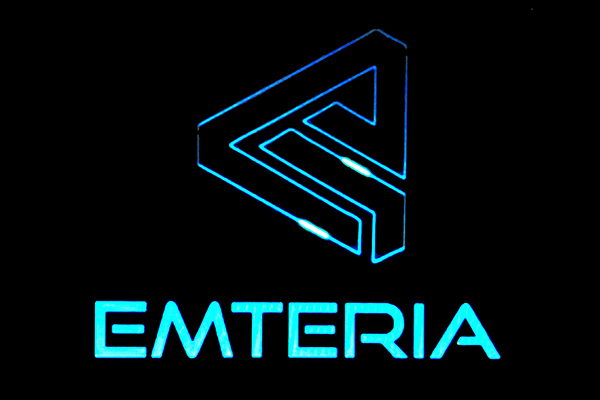The AI Landscape Is Evolving—Fast
Over the past decade, AI has largely been powered by the cloud. Complex models were trained and deployed in massive data centers, relying on constant connectivity and remote compute power. But that’s changing rapidly. Edge AI—where intelligence is embedded directly in devices at the edge of the network—is gaining serious momentum.
Whether it’s industrial robots making split-second decisions or smartphones executing voice commands locally, edge AI is redefining how and where intelligence happens. The benefits are clear: ultra-low latency, improved data privacy, and reduced reliance on constant cloud connectivity.
Yet, this evolution doesn’t come easy. Edge devices face tight constraints in terms of power, thermal envelope, and size. General-purpose CPUs struggle to meet the compute demands of modern AI models under these conditions. That’s where AI accelerators come in—not just to make things faster, but to make edge AI viable in the first place.
Types of Artificial Intelligence
Before we talk about acceleration, let’s set the context with a breakdown of AI itself. AI is not one-size-fits-all. There are several categories based on capability and design intent:
- Narrow AI (Weak AI)
This is what we mostly see today—AI systems engineered for specific tasks like image recognition or spam filtering. They’re effective but task-specific. - General AI (Strong AI)
Still hypothetical, general AI would have the ability to reason and learn across any domain like a human. No working examples exist yet. - Superintelligent AI
This goes beyond human intelligence across all areas. It’s a theoretical endgame of AI evolution, often discussed in ethical and philosophical circles. - Reactive Machines
These are basic systems that respond to stimuli but have no memory—like IBM’s Deep Blue, which could play chess but not learn from its games. - Limited Memory AI
Systems that leverage historical data for better decision-making, such as autonomous driving systems that learn from traffic patterns. - Self-Aware AI
This is still entirely theoretical. It refers to AI that has consciousness and self-awareness—an idea more common in science fiction than labs. - Theory of Mind AI
An experimental domain where AI can model and interpret human emotions and intentions. Promising, but still early-stage. - Machine Learning (ML)
A subset of AI that uses data-driven learning. Neural networks, supervised learning, and deep learning fall into this camp.
What Is an AI Accelerator?
An AI accelerator is specialized hardware designed to handle the unique compute requirements of AI and ML workloads. Unlike general-purpose CPUs, these components are optimized for parallelism, matrix math, and inference speed. They’re not just about raw horsepower—they’re about efficiency, responsiveness, and enabling real-time performance.
Types of AI Accelerators
AI accelerators fall broadly into two categories: hardware and software.
- Hardware Accelerators
These include GPUs, TPUs, FPGAs, and ASICs—chips built specifically to handle AI operations like convolutions and matrix multiplications with high throughput. - Software Accelerators
These are optimization toolkits—such as NVIDIA TensorRT, Intel OpenVINO, or ONNX Runtime—that tweak how models run on given hardware, often squeezing out major performance gains.
How AI Accelerators Work
AI workloads exist across two major domains: cloud and edge.
- In hyperscale data centers, accelerators are used to scale massive training and inference tasks across racks of servers. Think NVIDIA H100 or Google TPUs—designed to deliver exaflops of compute.
- At the edge, the focus shifts. The challenge is delivering real-time intelligence within tight power and thermal budgets. AI IP cores are increasingly embedded in SoCs used in smartphones, smart cameras, and industrial systems. These deliver high performance locally, with minimal latency, without constantly pinging the cloud.
Key Benefits of AI Accelerators
Specialized AI hardware delivers clear advantages in several key areas:
- Energy Efficiency
AI accelerators can perform operations using dramatically less power—often 1/100th to 1/1000th of what a CPU would require. For edge devices, this is the difference between a working product and a dead-on-arrival prototype. - Real-Time Responsiveness
Applications like autonomous navigation or real-time translation can’t tolerate lag. Accelerators enable microsecond-level inference, powering experiences that feel seamless and instantaneous. - Scalability
AI accelerators can be stacked or distributed to scale performance. Add more accelerators, and you scale the throughput—ideal for modular systems that grow with application demands. - Architectural Flexibility
Modern systems often combine CPUs, GPUs, NPUs, and FPGAs in heterogeneous configurations. Each part handles what it’s best at—maximizing both speed and efficiency.
Challenges in Accelerator Design
Building effective AI acceleration solutions isn’t easy. Here are some of the biggest hurdles engineers face:
- Thermal Constraints
High-performance chips generate serious heat. In cloud environments, this means innovative cooling. In edge systems, it means designing hardware that performs under tight thermal limits. - Memory Bottlenecks
AI models are data-hungry, and memory subsystems can become performance choke points. High-bandwidth memory (HBM) and emerging techniques like compute-in-memory are tackling this problem head-on. - Software Complexity
Programming AI accelerators often involves hardware-specific APIs and workflows. Bridging this gap are frameworks that abstract the complexity while keeping performance intact. But getting this balance right is still a work in progress.
Geniatech’s Approach to AI Acceleration
Geniatech, a leader in embedded and edge AI solutions, is solving these challenges through a pragmatic approach:
- Modular AI Modules – These plug-and-play solutions make AI acceleration easy to integrate into diverse hardware systems across industries.
- Optimized Edge Platforms – Balanced designs that deliver strong performance within edge-grade power and thermal envelopes.
- Custom AI Hardware – Tailored solutions for sectors like smart manufacturing, healthcare, and public infrastructure, where performance and reliability are mission-critical.
By aligning hardware and software design to the needs of edge environments, Geniatech enables practical AI deployment at scale—powering everything from smart cities to industrial automation.

Conclusion: The Hardware Behind the AI Revolution
AI accelerators aren’t just “nice to have”—they’re essential. They enable the real-time, always-on, low-latency intelligence that modern applications demand. Without them, edge AI would simply not be feasible.
As AI models grow larger and their use cases more diverse, the demand for specialized acceleration will only intensify. Companies like Geniatech, innovating at the intersection of performance and power efficiency, are helping shape a future where AI is everywhere—from pocket devices to autonomous factories.
In the end, the future of AI won’t be determined by algorithms alone—but by the hardware architectures that bring those algorithms to life, wherever intelligence is needed most.

